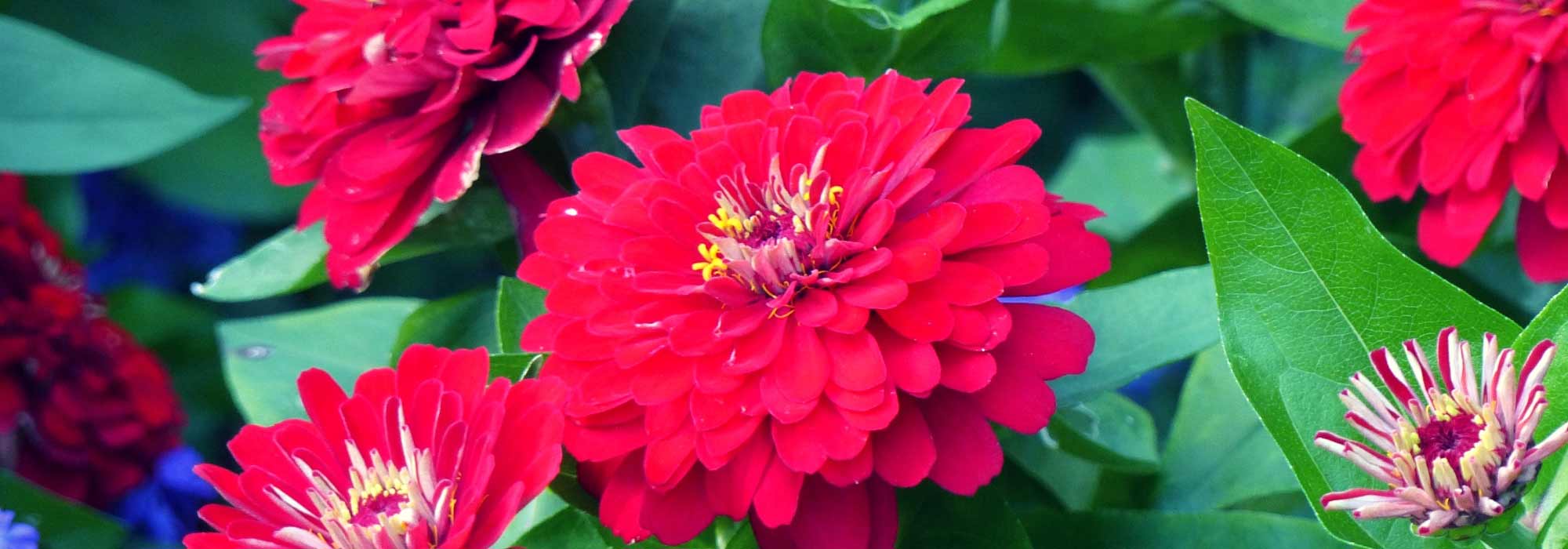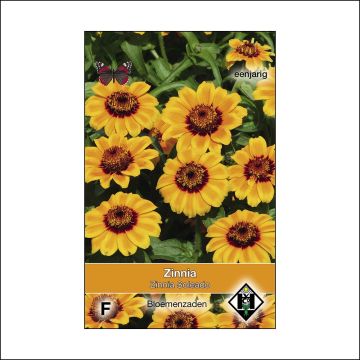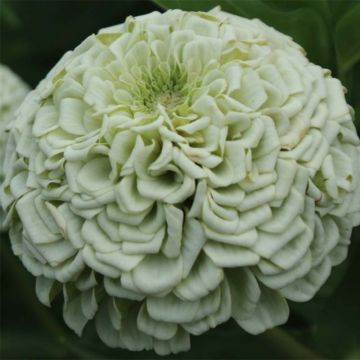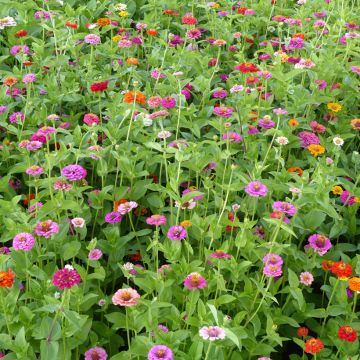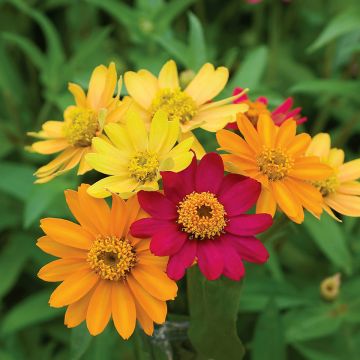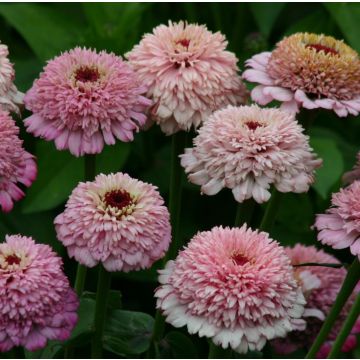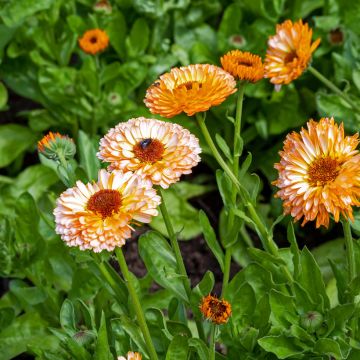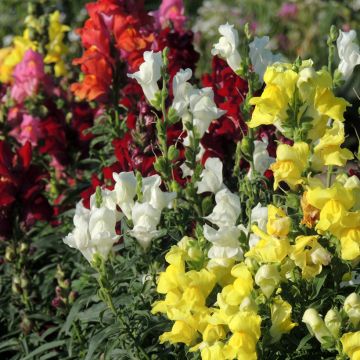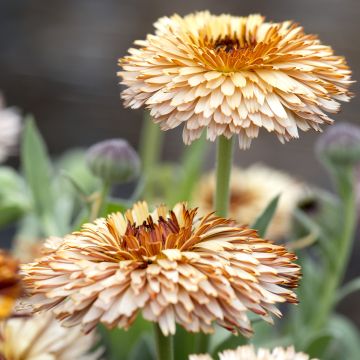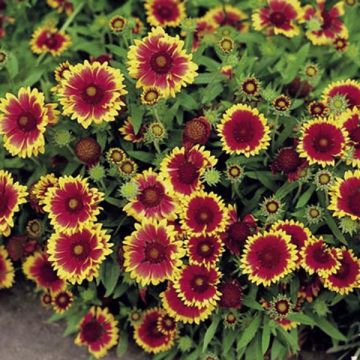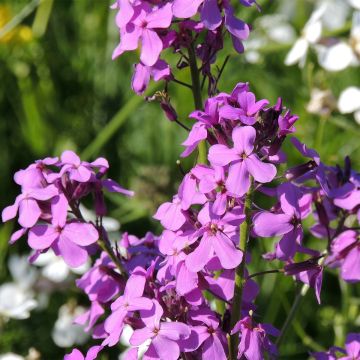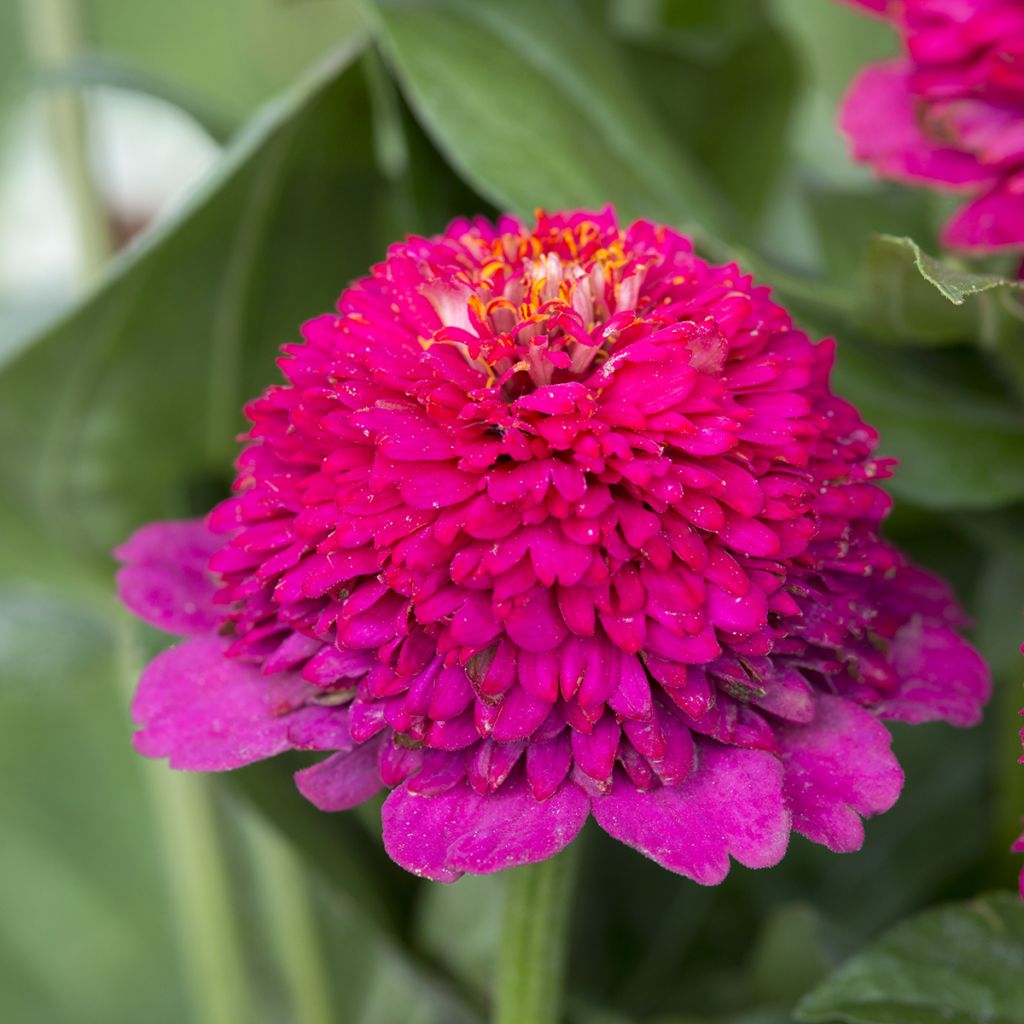

Zinnia elegans Cresto Violet - seeds
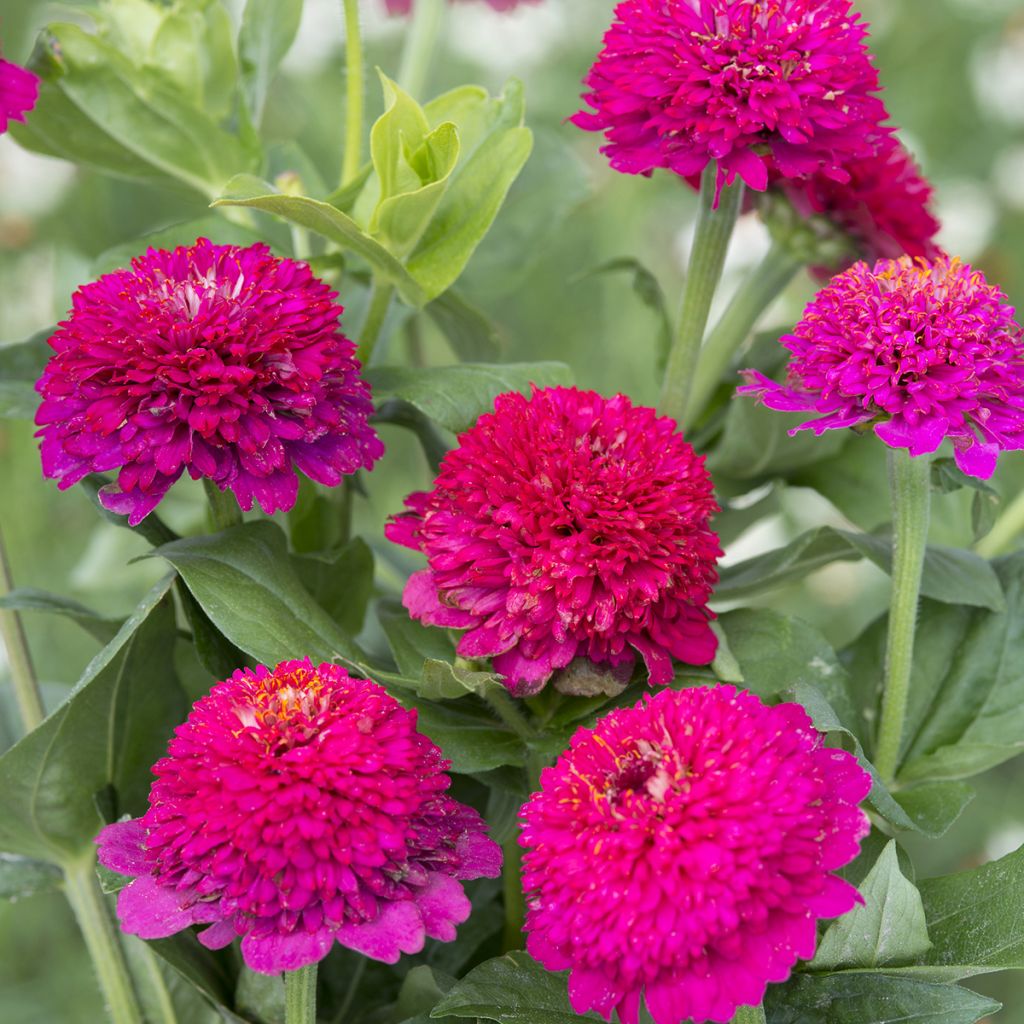

Zinnia elegans Cresto Violet - seeds
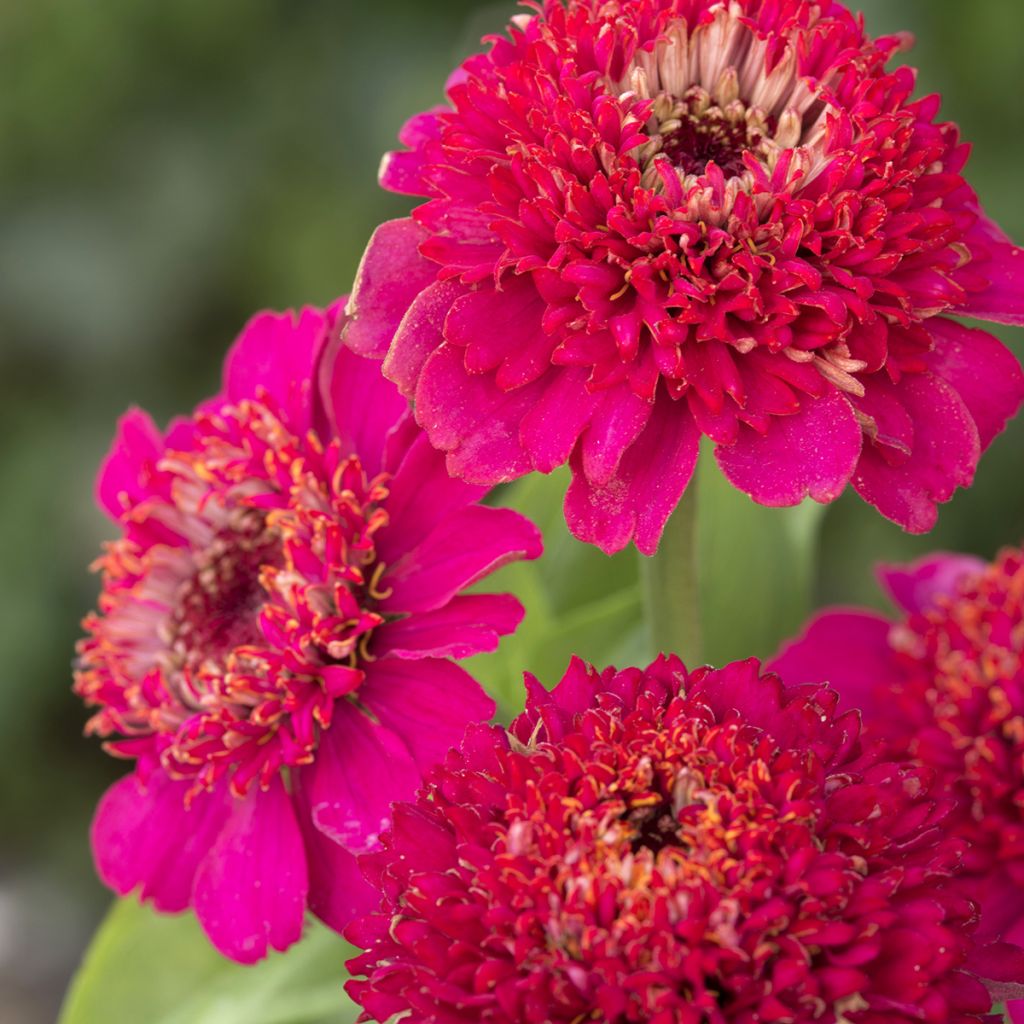

Zinnia elegans Cresto Violet - seeds
Zinnia elegans Cresto Violet - seeds
Zinnia x elegans Cresto! Violet
Common Zinnia, Elegant Zinnia, Youth-and-old-age
Special offer!
Receive a €20 voucher for any order over €90 (excluding delivery costs, credit notes, and plastic-free options)!
1- Add your favorite plants to your cart.
2- Once you have reached €90, confirm your order (you can even choose the delivery date!).
3- As soon as your order is shipped, you will receive an email containing your voucher code, valid for 3 months (90 days).
Your voucher is unique and can only be used once, for any order with a minimum value of €20, excluding delivery costs.
Can be combined with other current offers, non-divisible and non-refundable.
Home or relay delivery (depending on size and destination)
Schedule delivery date,
and select date in basket
This plant carries a 6 months recovery warranty
More information
We guarantee the quality of our plants for a full growing cycle, and will replace at our expense any plant that fails to recover under normal climatic and planting conditions.
Would this plant suit my garden?
Set up your Plantfit profile →
Description
Zinnia elegans Cresto Violet is a selection of Zinnia with scabious-like flowers from the latest generation that produces a very high percentage of perfectly double flowers on long stems. It is a generous and colourful annual plant with flowering reminiscent of large, purplish pompons. Stunning in flower beds, they are also excellent cut flowers for fresh or dried bouquets. This annual is resistant to heat and drought and requires little care but needs well-drained soil. Sow in seed trays from March or directly in the ground after the last frost.
Zinnia elegans is a robust annual plant belonging to the Asteraceae family. This botanical species, native to Mexico, has given rise to numerous cultivars. 'Cresto Violet' has been selected for the beautiful shape and vibrant colour of its double flowers. Some flowers may be semi-double or irregular. Each plant forms a beautiful, branching clump, which reaches about 75 cm (30in) high with flowers, and 30 cm (12in) wide in just a few weeks. Its stems are hollow and moderately brittle, adorned with rough and downy, lanceolate to elliptical, medium green leaves. Flowering occurs 10 to 13 weeks after sowing. It starts in June-July and continues until September-October, depending on the sowing date. The colour of the flowers is somewhere between magenta and purple, fading slightly over time. The nectar-rich flowers appear in the axil of the leaves and are large, 6 cm (2in) heads composed of numerous ligulate petals surrounding a pompon-shaped centre. The yellow central disk is visible on the rare flowers that are not fully double. After pollination by insects, seeds are formed that can be harvested for sowing the following spring.
Watching zinnias grow is always a surprise. They can emerge from the ground in the most unlikely places with their flowers blooming even in rocky soil and scorching sun. The vibrant colour of Zinnia Cresto Violet pairs well with your most beautiful white, mauve, or purple roses, as well as with purple and chocolate-coloured flowers or foliage. Try it with purple basil, 'Velvet Curtains' amaranthus, and 'Rubrum' Pennisetum x advena. Zinnias are perfect in rustic flower beds, alongside cosmos, autumn asters ('Little Carlow' Aster, A. turbinellus, etc.), or light grasses like Stipa or compact Miscanthus. They can also be sown in pots to decorate the terrace in summer.
Zinnia elegans Cresto Violet - seeds in pictures


Flowering
Foliage
Plant habit
Botanical data
Zinnia
x elegans
Cresto! Violet
Asteraceae
Common Zinnia, Elegant Zinnia, Youth-and-old-age
Cultivar or hybrid
Other Zinnia seeds
View all →Planting and care
Sow zinnia seeds directly outdoors in May, once the soil has warmed up. Choose a sunny spot with well-maintained, well-drained, well-prepared, weed-free, and loosened soil and sow the seeds at a depth of 3 mm (0in) and 30 cm (12in) apart. Water regularly, especially during dry periods. Germination usually takes 7 to 14 days. When the zinnia seedlings are large enough to handle, thin them out to 30 cm (12in) apart.
You can also sow indoors from March to April at a temperature of 15-25°C (59-77°F). After sowing, keep the surface of the compost moist but not waterlogged and expose your seedlings to light, which promotes germination. When the seedlings are large enough to handle, transplant them and grow them on in cooler conditions.
When the plants are well-developed and all risk of frost has passed, gradually acclimatise them to outdoor conditions for 10-15 days before planting them in their final location. Zinnia elegans are easy-to-grow plants in sunny, well-drained to dry, fairly rich, even clayey soils. They are susceptible to powdery mildew in humid climates, especially if they do not have good air circulation around them. They thrive in climates with long, hot, and dry summers. They are not at all hardy.
Sowing period
Intended location
Planting & care advice
This item has not been reviewed yet - be the first to leave a review about it.
Similar products
Haven't found what you were looking for?
Hardiness is the lowest winter temperature a plant can endure without suffering serious damage or even dying. However, hardiness is affected by location (a sheltered area, such as a patio), protection (winter cover) and soil type (hardiness is improved by well-drained soil).

Photo Sharing Terms & Conditions
In order to encourage gardeners to interact and share their experiences, Promesse de fleurs offers various media enabling content to be uploaded onto its Site - in particular via the ‘Photo sharing’ module.
The User agrees to refrain from:
- Posting any content that is illegal, prejudicial, insulting, racist, inciteful to hatred, revisionist, contrary to public decency, that infringes on privacy or on the privacy rights of third parties, in particular the publicity rights of persons and goods, intellectual property rights, or the right to privacy.
- Submitting content on behalf of a third party;
- Impersonate the identity of a third party and/or publish any personal information about a third party;
In general, the User undertakes to refrain from any unethical behaviour.
All Content (in particular text, comments, files, images, photos, videos, creative works, etc.), which may be subject to property or intellectual property rights, image or other private rights, shall remain the property of the User, subject to the limited rights granted by the terms of the licence granted by Promesse de fleurs as stated below. Users are at liberty to publish or not to publish such Content on the Site, notably via the ‘Photo Sharing’ facility, and accept that this Content shall be made public and freely accessible, notably on the Internet.
Users further acknowledge, undertake to have ,and guarantee that they hold all necessary rights and permissions to publish such material on the Site, in particular with regard to the legislation in force pertaining to any privacy, property, intellectual property, image, or contractual rights, or rights of any other nature. By publishing such Content on the Site, Users acknowledge accepting full liability as publishers of the Content within the meaning of the law, and grant Promesse de fleurs, free of charge, an inclusive, worldwide licence for the said Content for the entire duration of its publication, including all reproduction, representation, up/downloading, displaying, performing, transmission, and storage rights.
Users also grant permission for their name to be linked to the Content and accept that this link may not always be made available.
By engaging in posting material, Users consent to their Content becoming automatically accessible on the Internet, in particular on other sites and/or blogs and/or web pages of the Promesse de fleurs site, including in particular social pages and the Promesse de fleurs catalogue.
Users may secure the removal of entrusted content free of charge by issuing a simple request via our contact form.
The flowering period indicated on our website applies to countries and regions located in USDA zone 8 (France, the United Kingdom, Ireland, the Netherlands, etc.)
It will vary according to where you live:
- In zones 9 to 10 (Italy, Spain, Greece, etc.), flowering will occur about 2 to 4 weeks earlier.
- In zones 6 to 7 (Germany, Poland, Slovenia, and lower mountainous regions), flowering will be delayed by 2 to 3 weeks.
- In zone 5 (Central Europe, Scandinavia), blooming will be delayed by 3 to 5 weeks.
In temperate climates, pruning of spring-flowering shrubs (forsythia, spireas, etc.) should be done just after flowering.
Pruning of summer-flowering shrubs (Indian Lilac, Perovskia, etc.) can be done in winter or spring.
In cold regions as well as with frost-sensitive plants, avoid pruning too early when severe frosts may still occur.
The planting period indicated on our website applies to countries and regions located in USDA zone 8 (France, United Kingdom, Ireland, Netherlands).
It will vary according to where you live:
- In Mediterranean zones (Marseille, Madrid, Milan, etc.), autumn and winter are the best planting periods.
- In continental zones (Strasbourg, Munich, Vienna, etc.), delay planting by 2 to 3 weeks in spring and bring it forward by 2 to 4 weeks in autumn.
- In mountainous regions (the Alps, Pyrenees, Carpathians, etc.), it is best to plant in late spring (May-June) or late summer (August-September).
The harvesting period indicated on our website applies to countries and regions in USDA zone 8 (France, England, Ireland, the Netherlands).
In colder areas (Scandinavia, Poland, Austria...) fruit and vegetable harvests are likely to be delayed by 3-4 weeks.
In warmer areas (Italy, Spain, Greece, etc.), harvesting will probably take place earlier, depending on weather conditions.
The sowing periods indicated on our website apply to countries and regions within USDA Zone 8 (France, UK, Ireland, Netherlands).
In colder areas (Scandinavia, Poland, Austria...), delay any outdoor sowing by 3-4 weeks, or sow under glass.
In warmer climes (Italy, Spain, Greece, etc.), bring outdoor sowing forward by a few weeks.






























